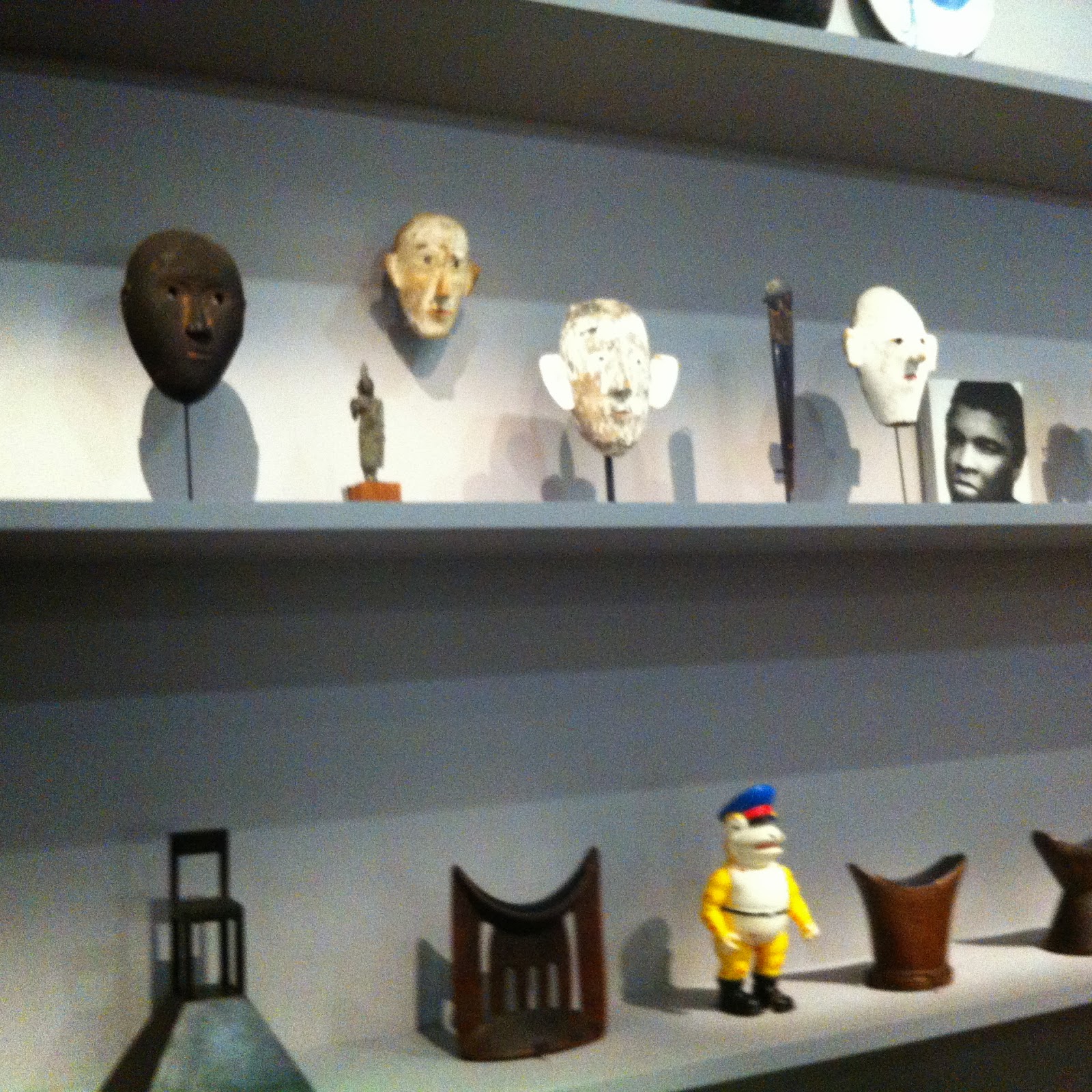 |
| Marlene Dumas, THe Army is Looking for the Enemy, 1985 |
There’s no secret to where the money comes from for this
vast collection of drawings, watercolours, ink and washes, collages, gouaches that
Daniel and Florence Gerlain have recently donated to the Centre Pompidou. But
what makes the Guerlain donation of “drawings” stand out is the collectors’
voracious appetite for works beyond personal and peculiar taste. The
collection, or at least, that part of it currently on display at the Pompidou
Centre is not only vast, but varied, international and fascinating.
 |
| Eduardo Arroya, Coiffeur, 1993 |
This said, I do find these kinds of exhibitions difficult to
approach. Because the Guerlain’s seem to acquire such a range of contemporary
drawings, there’s not a consistent or thematic logic to the collection. And
because only one work, or at best, one series, by each artist is exhibited
here, it’s difficult to give context to the works as we wander through. Which
is to say, the collection itself is not focused enough to create internal
logical that would, in turn, offer context. So my comments here are more
general and more impressionistic than I would like them to be.
If there is one quality that binds all the works on display
here is their intimacy. As Daniel Guerlain says in the accompanying text, what
makes “drawings” so special is their
immediacy. They reveal the most direct image of the artists brain, without
reworking, without the temporal narrative of rethinking. In the delicate, sometimes
barely perceptible flourishes of the pencil, pen, brush or charcoal, we see
thinking in motion.
There’s also an immense sensuousness to many of the works
displayed. At times, the paper and its undulations, knots and flaws become a
part of the work itself. And at other times the ink, watercolours, the media of
representation are always uneven and in motion that we can feel them, smell
them in a way that we cannot when standing before the very polished images of
old masters, in completion. When the paint buckles the paper, and again, when
the watercolour becomes transparent on the end of a brushstroke, the materials
almost become erotic they are so physical, tactile.
All of the works are also ephemeral. It’s not just the media
of representation, but the supports are almost verging on the disposable, the
replaceable as each work has a sense of transience, of motion. When I see a
delicate Gerhard Richter sketch, an image I have never seen before, I imagine
this could easily be a picture that he painted when he was filling in time,
like other people read their telephones or smoke a cigarette. And then it might
have found its way into a drawer, or to the bottom of a pile of sketches,
forgotten. There’s no heavy baggage attached to these images, no lofty ideas. They
are as spontaneous as they are transient, here today, gone tomorrow, a thought
blown in the wind, even when the works are intricately executed.
.jpeg) |
| Tomasz Kowalski, Untitled, 2012 |
There were so many pieces on display in the collection, some
by artists who no one will know, others by big names such as Gerhard Richter,
Richard Longo, Albert Oehlen. They are all arranged next to each other, no
preference given to the big names. Much of the new work is extremely
impressive, and so it deserves to sit with that of well-known artists. Two of my
newly discovered favorites among the works were the exquisite watercolours of
Silvia Bächli and Thomas Müller. Both were simple, as in uncluttered, sparse,
but confident depictions.
On my way out of the Pompidou Centre, I had a quick look
around the Surrealism and its Objects
exhibition upstairs. It’s interesting to see the Pompidou Centre indulging so
unashamedly in the blockbuster approach to art. And it is ultimately not such a
satisfying playground of Surrealist objects, as the title suggests. My advice?
Stay downstairs in the Guerlain donation and discover your own favourite new
artists.






